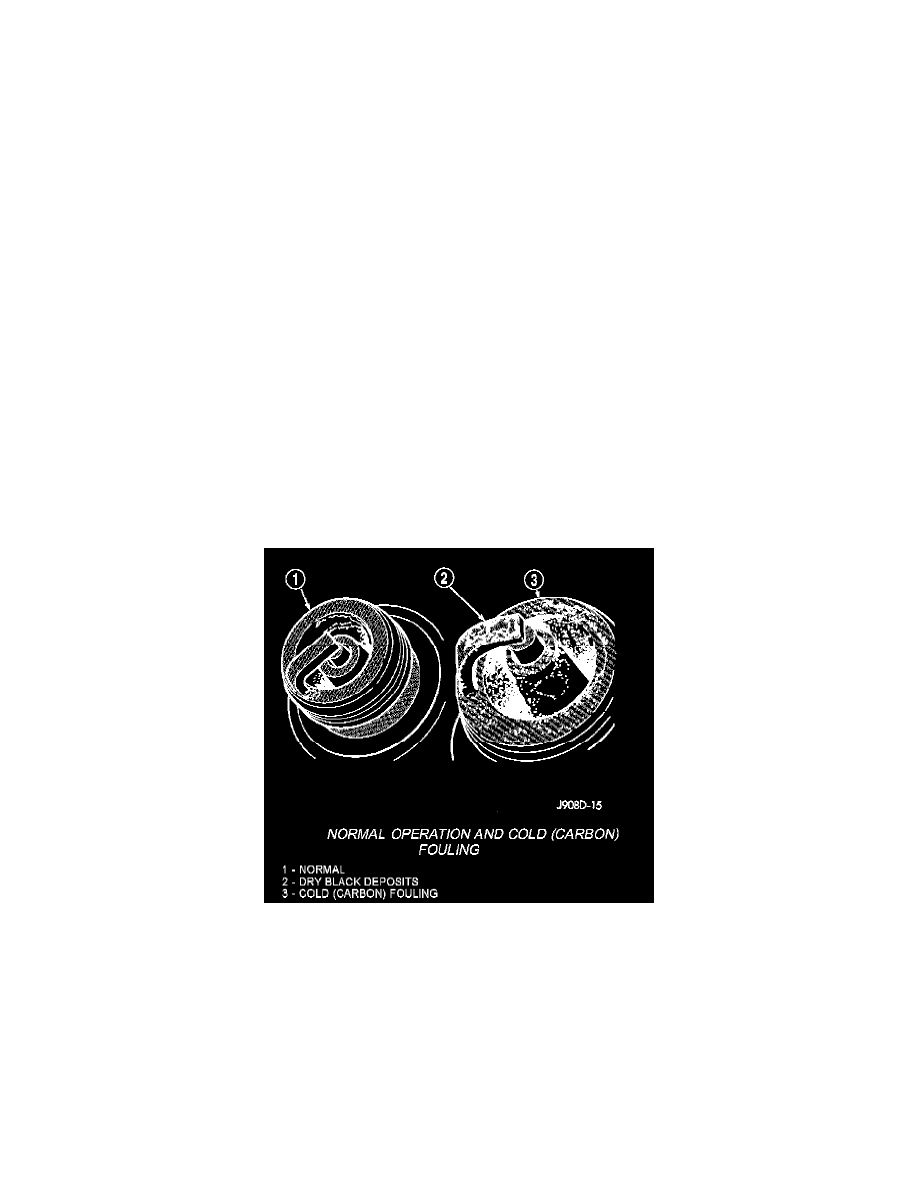RAM 2500 Truck 2WD V8-5.7L VIN D (2004)

Spark Plug: Testing and Inspection
To prevent possible pre-ignition and/or mechanical engine damage, the correct type/heat range/number spark plug must be used.
Always use the recommended torque when tightening spark plugs. Incorrect torque can distort the spark plug and change plug gap. It can also pull the
plug threads and do possible damage to both the spark plug and the cylinder head.
Remove the spark plugs and examine them for burned electrodes and fouled, cracked or broken porcelain insulators. Keep plugs arranged in the order in
which they were removed from the engine. A single plug displaying an abnormal condition indicates that a problem exists in the corresponding cylinder.
Replace spark plugs at the intervals recommended in the Lubrication and Maintenance section.
Spark plugs that have low mileage may be cleaned and reused if not otherwise defective, carbon or oil fouled.
CAUTION: Never use a motorized wire wheel brush to clean the spark plugs. Metallic deposits will remain on the spark plug insulator and will cause
plug misfire.
Spark plug resistance values range from 6,000 to 20,000 ohms (when checked with at least a 1000 volt spark plug tester). Do not use an ohmmeter to
check the resistance values of the spark plugs. In accurate readings will result.
NORMAL OPERATING
The few deposits present on the spark plug will probably be light tan or slightly gray in color. This is evident with most grades of commercial gasoline.
There will not be evidence of electrode burning. Gap growth will not average more than approximately 0.025 mm (.001 in) per 3200 km (2000 miles)
of operation. Spark plugs that have normal wear can usually be cleaned, have the electrodes filed, have the gap set and then be installed.
Some fuel refiners in several areas of the United States have introduced a manganese additive (MMT) for unleaded fuel. During combustion, fuel with
MMT causes the entire tip of the spark plug to be coated with a rust colored deposit. This rust color can be misdiagnosed as being caused by coolant in
the combustion chamber. Spark plug performance may be affected by MMT deposits.
COLD FOULING/CARBON FOULING
Cold fouling is sometimes referred to as carbon fouling. The deposits that cause cold fouling are basically carbon. A dry, black deposit on one or two
plugs in a set may be caused by sticking valves or defective spark plug cables. Cold (carbon) fouling of the entire set of spark plugs may be caused by a
clogged air cleaner element or repeated short operating times (short trips).
WET FOULING OR GAS FOULING
A spark plug coated with excessive wet fuel or oil is wet fouled. In older engines, worn piston rings, leaking valve guide seals or excessive cylinder wear
can cause wet fouling. In new or recently overhauled engines, wet fouling may occur before break-in (normal oil control) is achieved. This condition can
usually be resolved by cleaning and reinstalling the fouled plugs.
OIL CRASH ENCRUSTED
